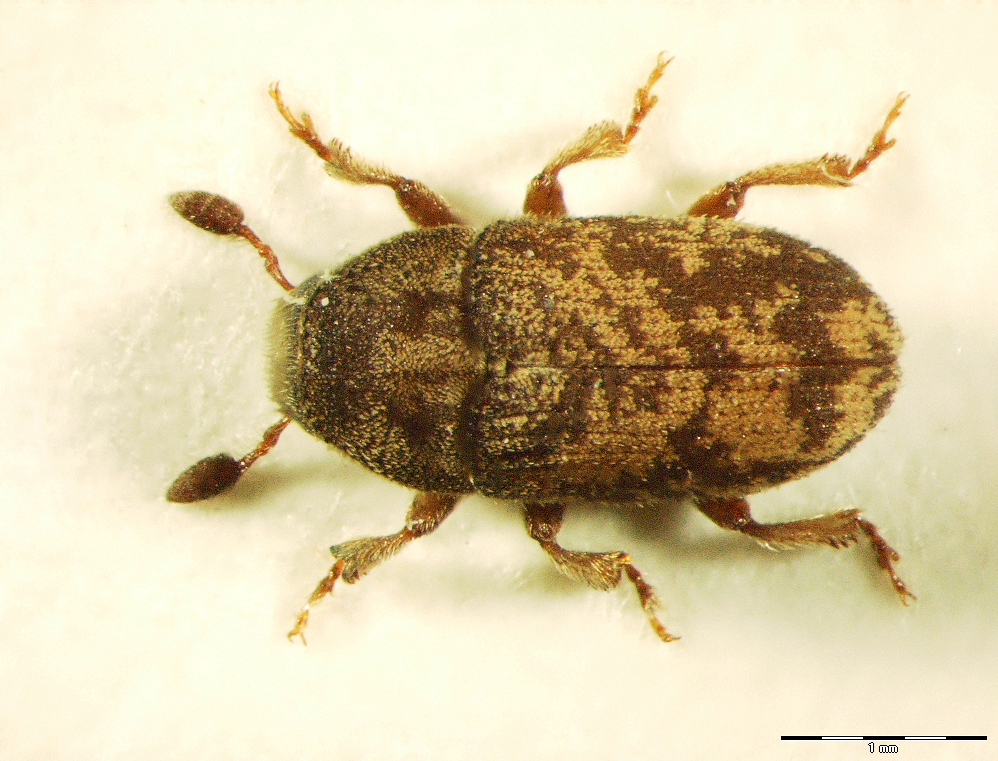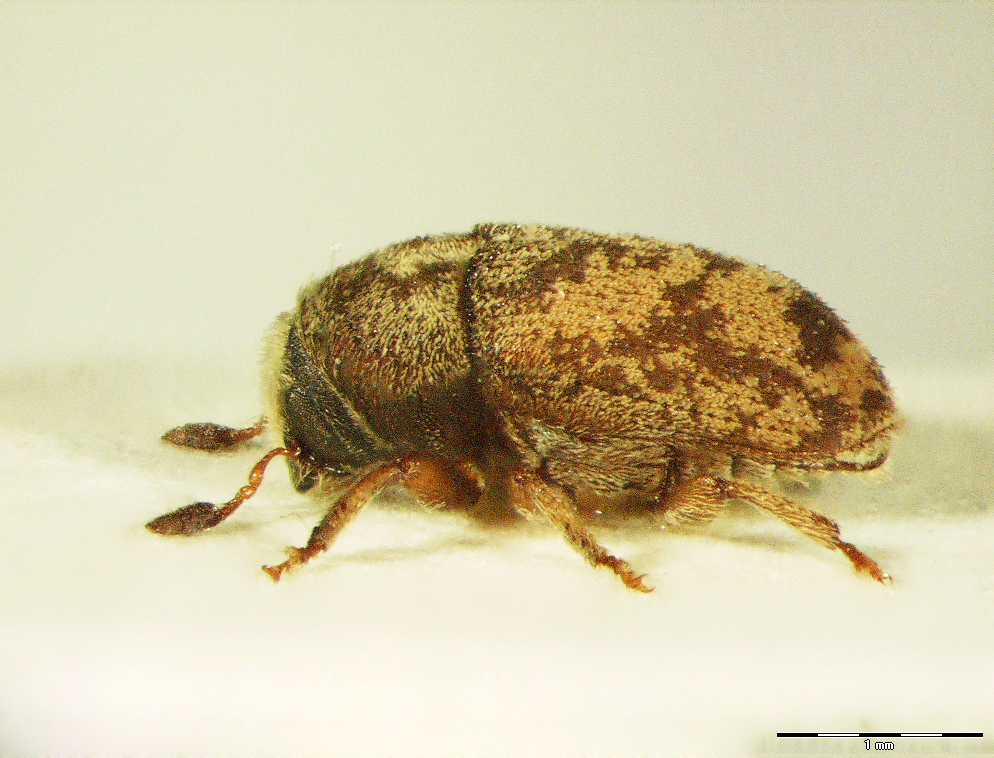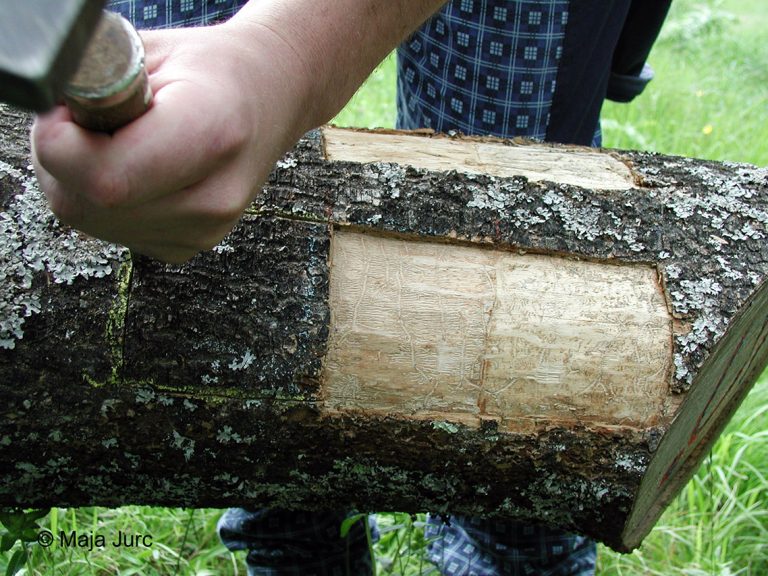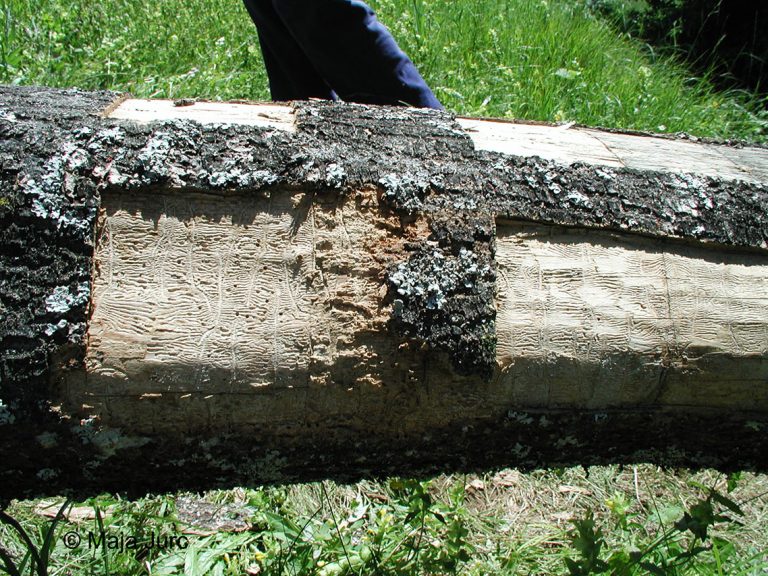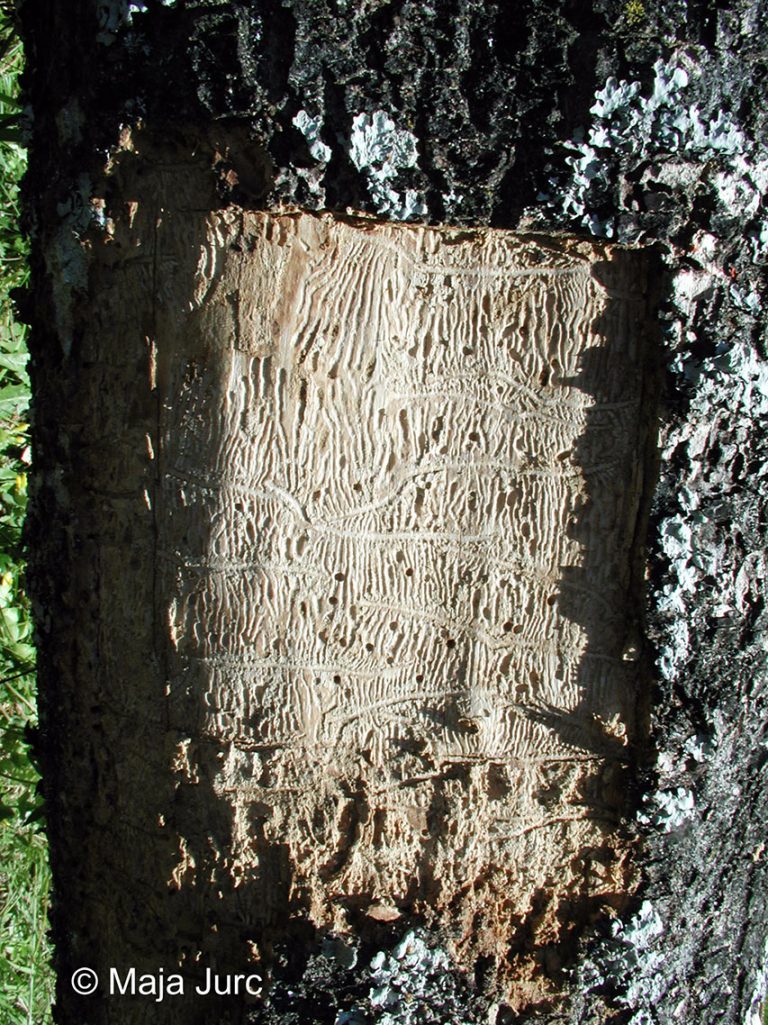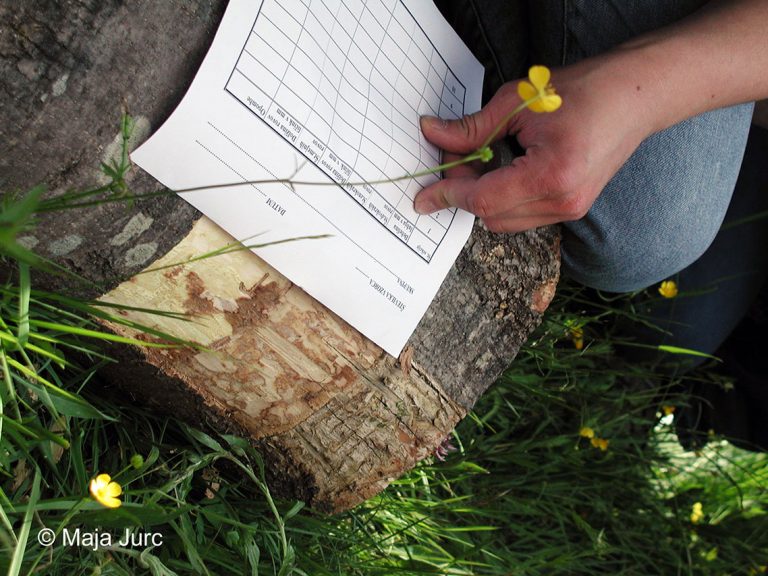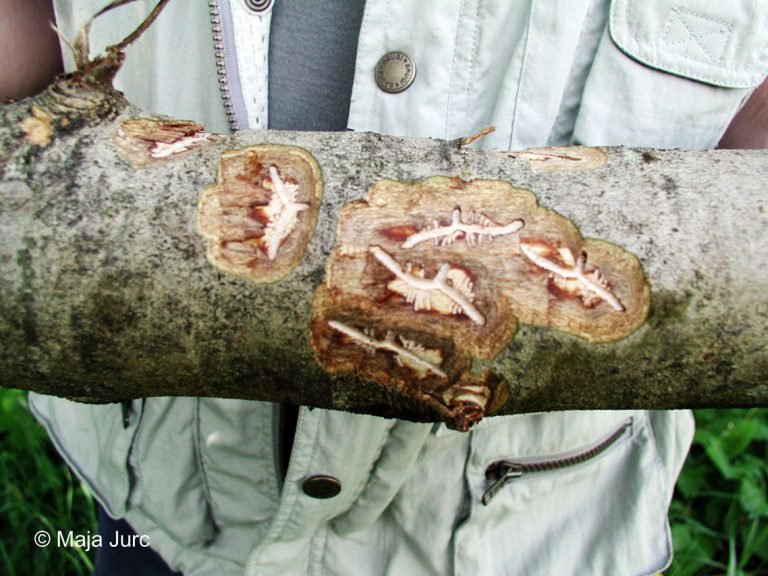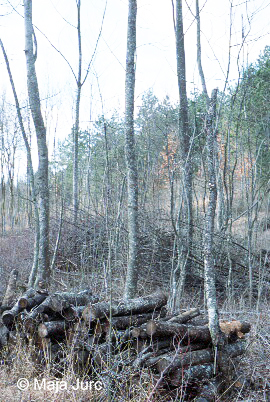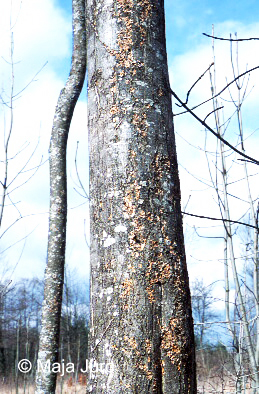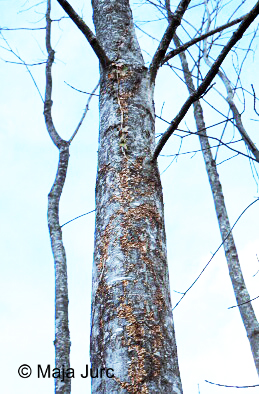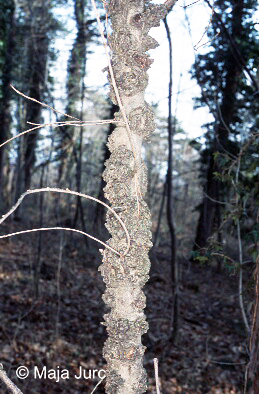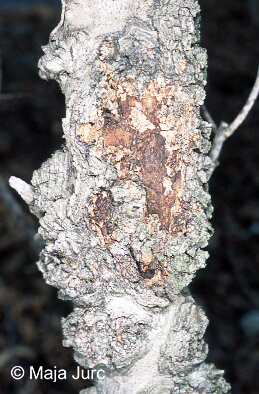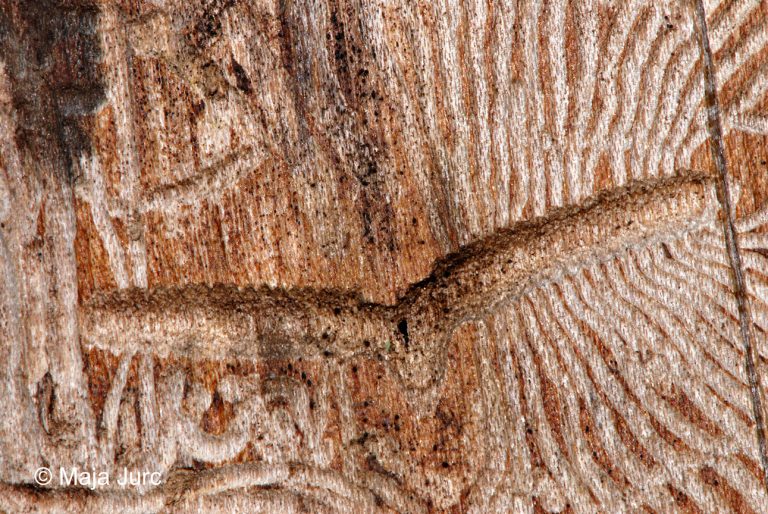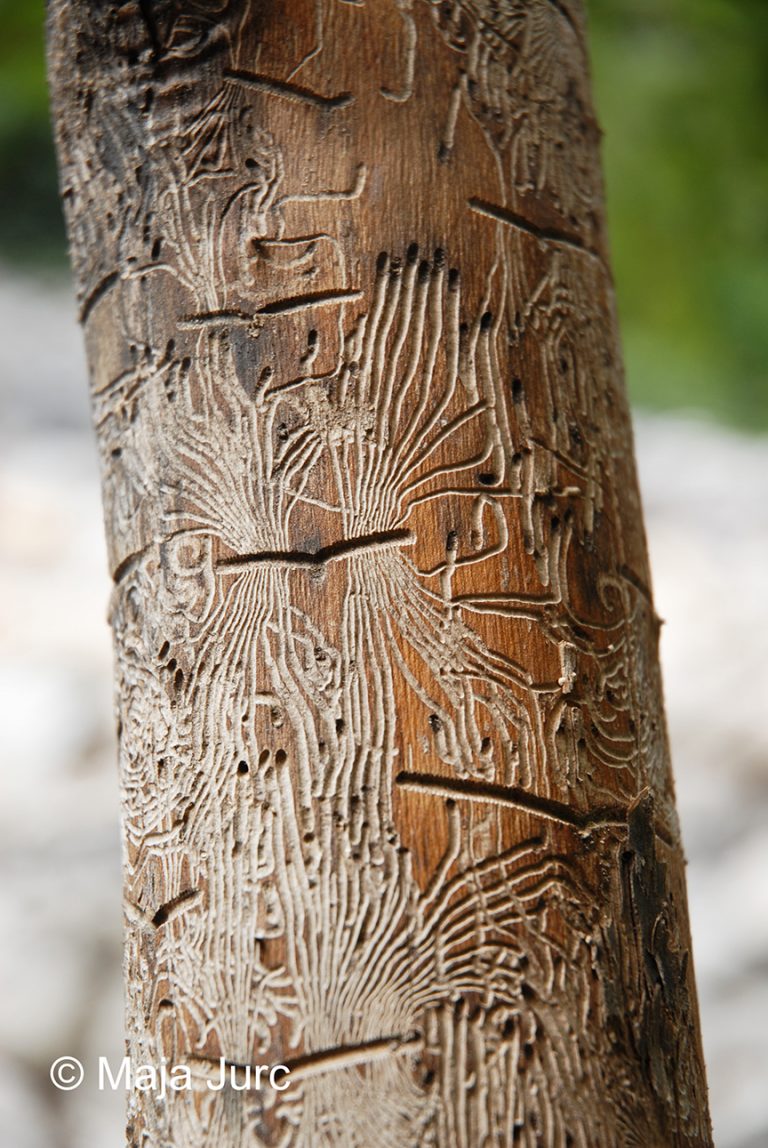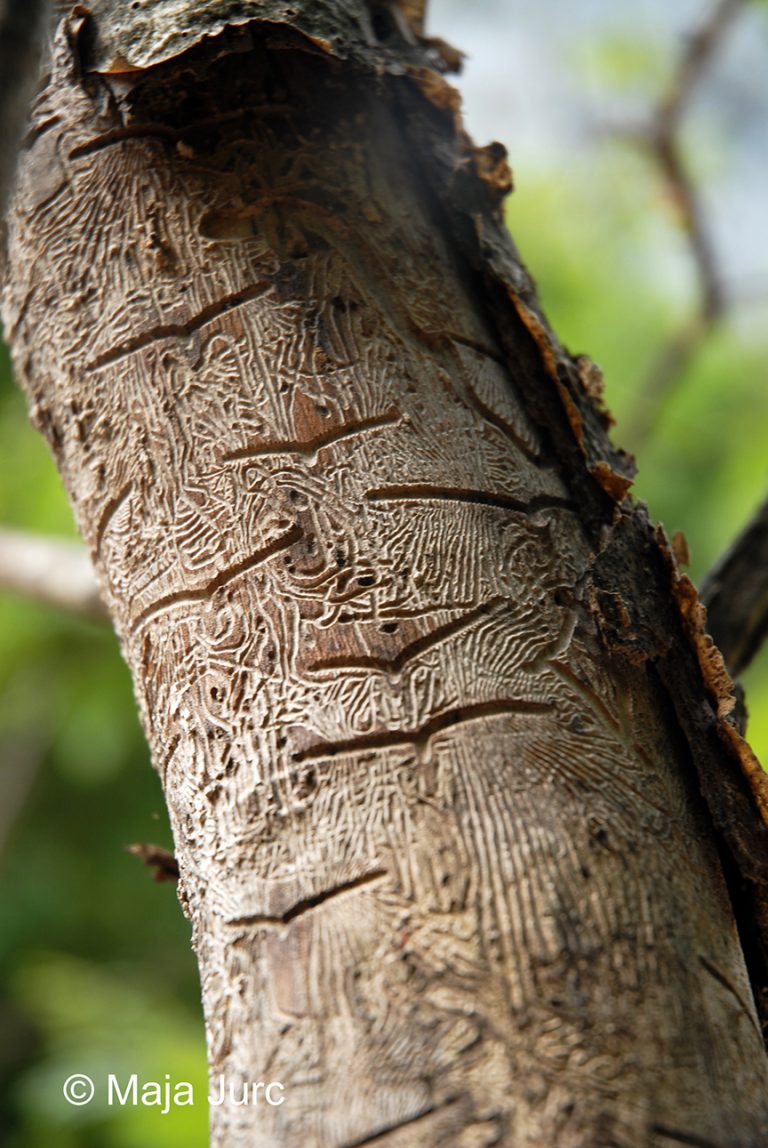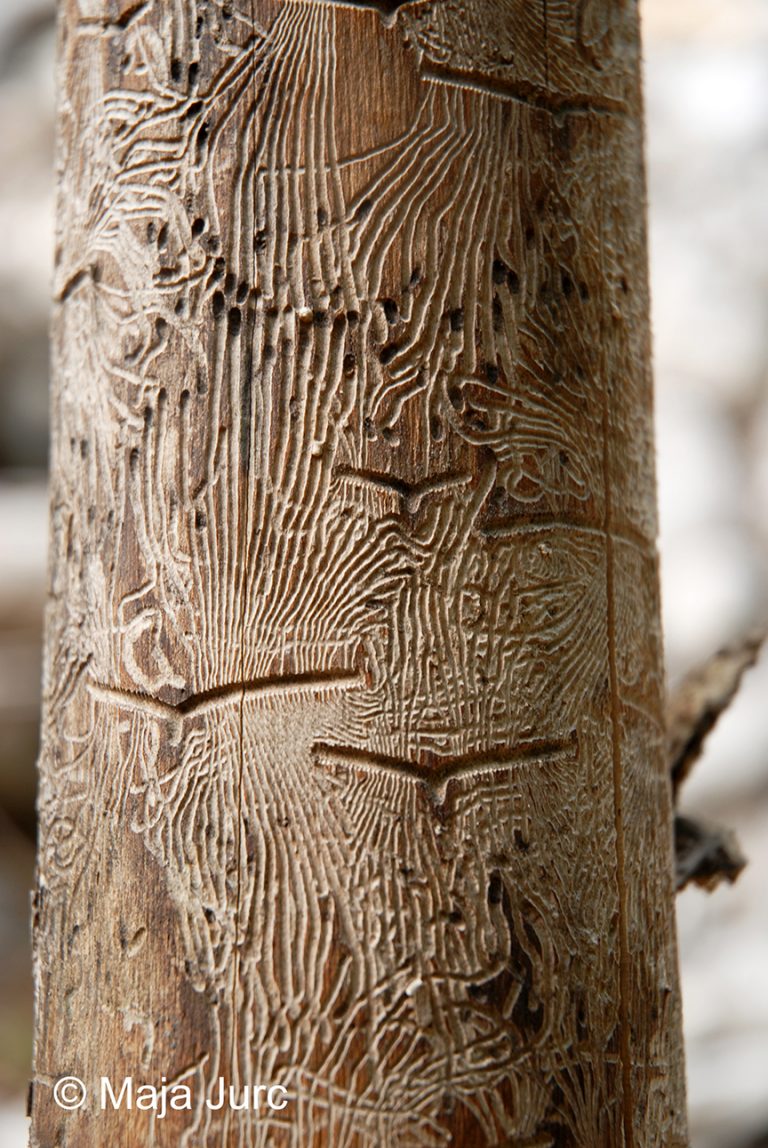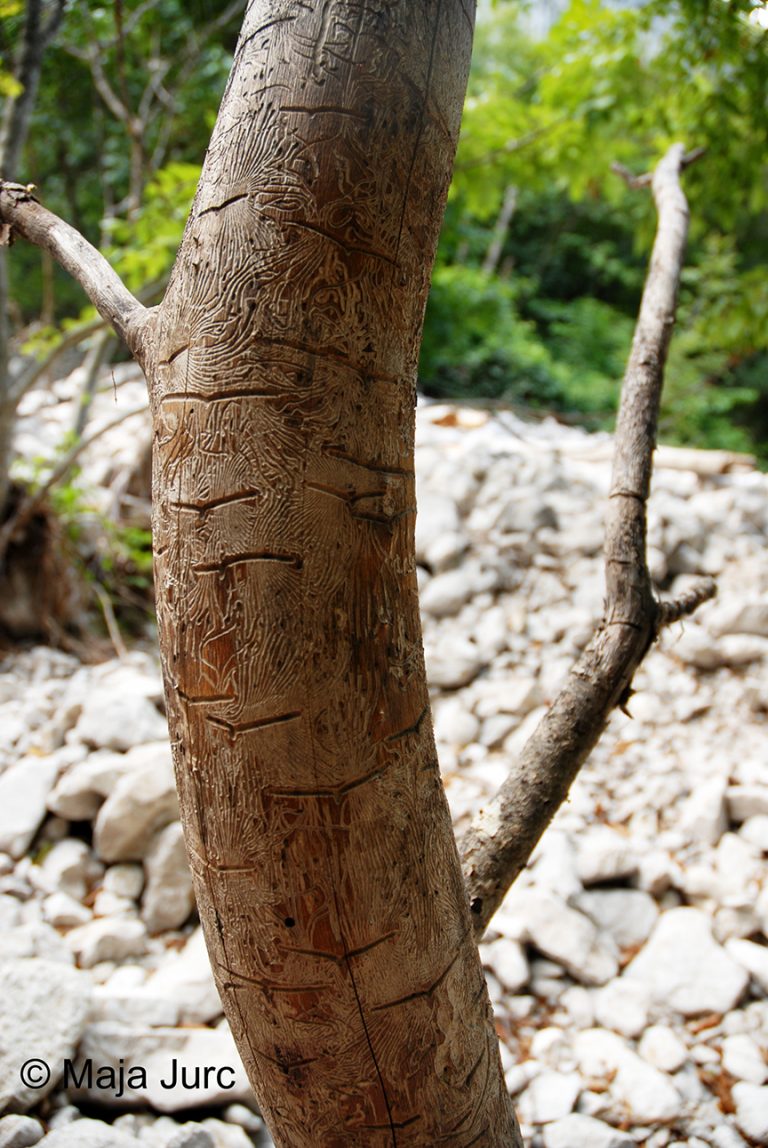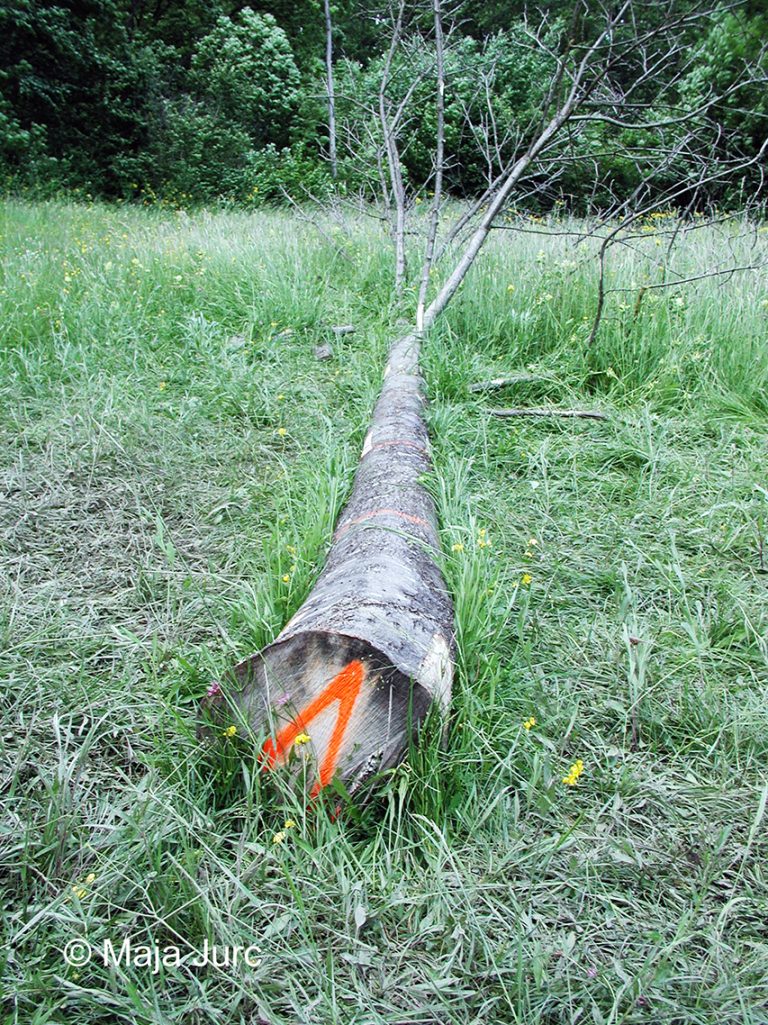04.03. Hylesinus varius (Fabricius, 1775)
Presence
E: AU BE BU BY CR CT CZ DE EN FI FR GB GE GR HU IR IT LA LS LT LU MA MC NR NT PL PT RO SK SL SP SV ST SZ UK YU
N: AG MO TU
A: HEI IN JIL LIA SHA TR
Figure 28: Hylesinus varius, dorsal, lateral (Photo: Maja Jurc)
Older catalogs and keys – citations of name
Siegel 1866: Hylesinus Fraxini; Grüne 1979: Leperesinus varius (Fabricius, 1775); Freude, Harde, Lohse 1981: L. varius Fabricius; Titovšek 1988: L. varius (Fabricius); Pfeffer & Knížek 1993: Leperesinus fraxini (Panzer, 1779); Pfeffer 1995: Hylesinus varius (Fabricius, 1775).

Figure 29: Hylesinus varius, distribution map according to historical and recent data
Ecology and presence in Slovenia
The species occurs in central and southern Europe, the Urals, northern Africa and Asia. Siegel (1866) states that the species is “not rare in Carniola, on Fraxinus”. Today it is distributed throughout Slovenia, but its abundance is likely to decline in the future due to the ash decline (Figure 29). Hosts include Fraxinus excelsior, F. ornus, F. americana, and less frequently Olea europaea, Juglans spp., Quercus robur, Pyrus sp., Robinia pseudoacacia, Fagus spp., Acer spp., Corylus avellana, Carpinus betulus and Syringa vulgaris. In Slovenia, the species has been recorded on F. excelsior, F. ornus, F. angustifolia and O. europaea. It attacks trunks and main branches, exceptionally also thinner material up to the thickness of a pencil. Swarms from March to May, developing one generation per year. The tunnel system is biramous transversely, the brood chamber, maternal gallery, larval tunnels and pupation chamber are deep in the sapwood. Adult length is 2.0-3.5 mm (Figure 28). The species is not only secondary but also primary, due to its complementary feeding and overwintering under the bark of perfectly healthy trees. This produces cracks and thickening on the trunks, resembling cankers, “ash flowers”. In Slovenia it is the most economically important bark beetle on ash trees.

